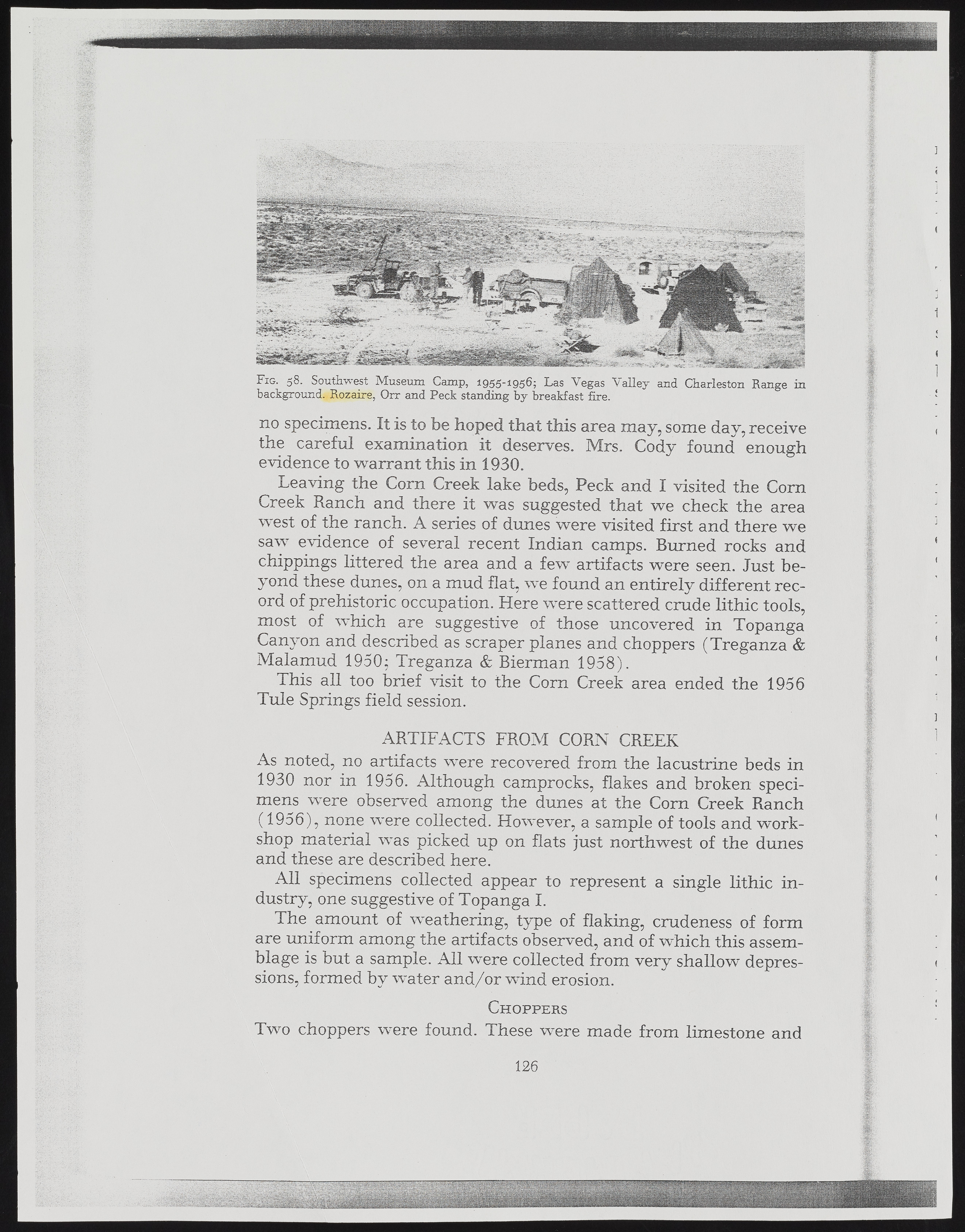Copyright & Fair-use Agreement
UNLV Special Collections provides copies of materials to facilitate private study, scholarship, or research. Material not in the public domain may be used according to fair use of copyrighted materials as defined by copyright law. Please cite us.
Please note that UNLV may not own the copyright to these materials and cannot provide permission to publish or distribute materials when UNLV is not the copyright holder. The user is solely responsible for determining the copyright status of materials and obtaining permission to use material from the copyright holder and for determining whether any permissions relating to any other rights are necessary for the intended use, and for obtaining all required permissions beyond that allowed by fair use.
Read more about our reproduction and use policy.
I agree.Information
Digital ID
Permalink
Details
Member of
More Info
Rights
Digital Provenance
Publisher
Transcription
Fig. 58. Soutirwest Museum Camp, 1955- 1956; Las Vegas V a lley and Charleston Range in background. Rozaire, Orr and Peck standing by breakfast fire. no specimens. It is to be hoped that this area may, some day, receive the careful examination it deserves. Mrs. Cody found enough evidence to w arrant this in 1930. Leaving the Corn Creek lake beds, Peck and I visited the Corn Creek Ranch and there it was suggested that we check the area west of the ranch. A series of dunes were visited first and there we saw evidence of several recent Indian camps. Burned rocks and chippings littered the area and a few artifacts were seen. Just beyond these dunes, on a mud flat, we found an entirely different record of prehistoric occupation. Here were scattered crude lithic tools, most of which are suggestive of those uncovered in Topanga Canyon and described as scraper planes and choppers (Treganza & M alamud 1950; Treganza & Bierman 1958). This all too brief visit to the Corn Creek area ended the 1956 Tule Springs field session. As noted, no artifacts "were recovered from the lacustrine beds in 1930 nor in 1956. Although camprocks, flakes and broken specimens were observed among the dunes at the Corn Creek Ranch (1956), none were collected. However, a sample of tools and workshop m aterial was picked up on flats just northwest of the dunes and these are described here. All specimens collected appear to represent a single lithic industry, one suggestive of Topanga I. The amount of weathering, type of flaking, crudeness of form are uniform among the artifacts observed, and of wdiich this assemblage is but a sample. All were collected from very shallow depressions, formed by w ater an d /o r wind erosion. Choppers Two choppers were found. These were made from limestone and .’A-' m i p is Av ' Jsfi I II i i 126

